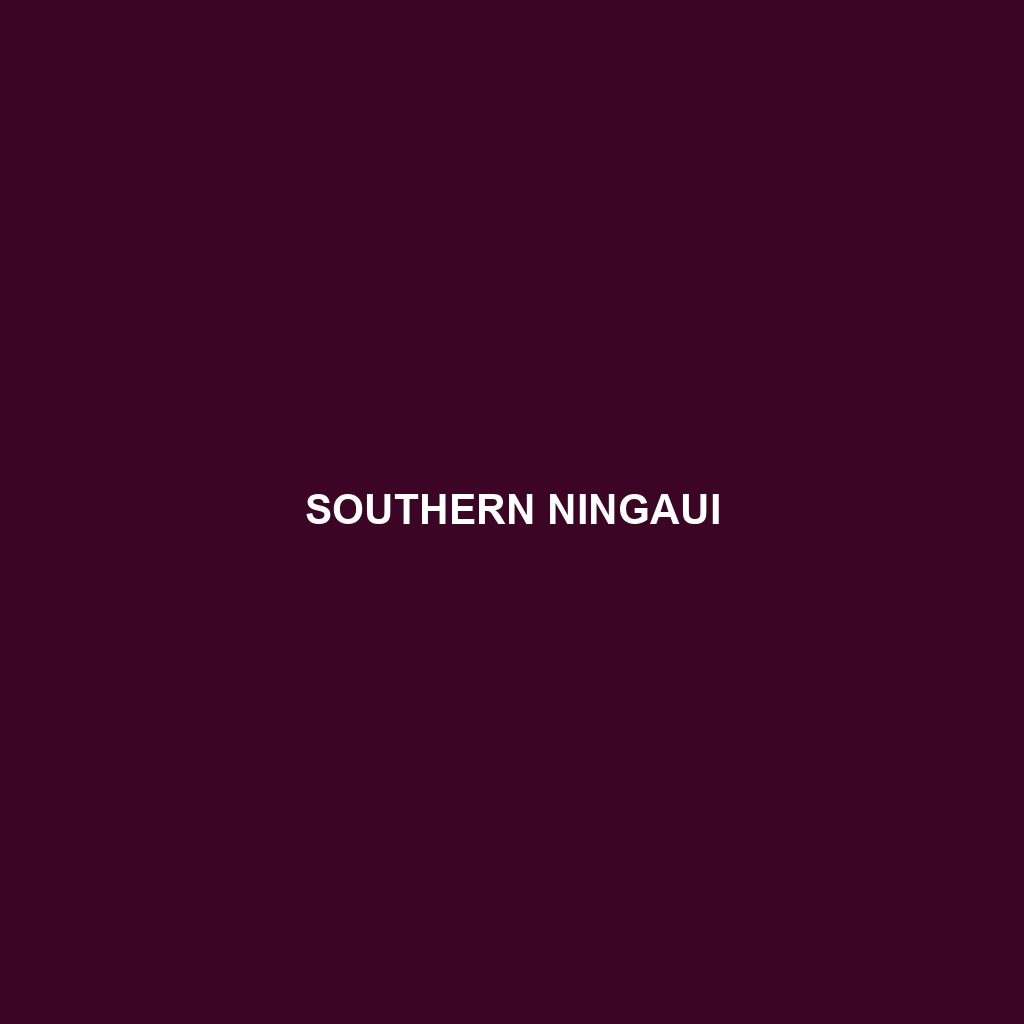Southern Ningaui: A Tiny Marvel of the Australian Outback
The Southern Ningaui (Ningaui yvonneae) is a small, nocturnal marsupial native to the arid and semi-arid regions of southern Australia. Known for their diminutive size and elusive nature, these tiny creatures play a fascinating role in the ecosystem. Despite their small stature, Southern Ningauis are resilient and adaptive, making them an intriguing subject of study and admiration.
Physical Characteristics
Size: Southern Ningauis are notably small, with a body length ranging from 5 to 7 cm (2 to 2.75 inches) and a tail length of about 5.5 to 6.5 cm (2.2 to 2.6 inches). They typically weigh between 5 to 10 grams (0.18 to 0.35 ounces).
Coloration: Their fur is generally grey-brown, blending seamlessly with the sandy and scrubby environments they inhabit. This coloration provides excellent camouflage against predators.
Special Features: They possess a pointed snout and sharp teeth, adapted for their insectivorous diet. Their large, dark eyes enhance night vision, essential for their nocturnal lifestyle. The tail is slender and often appears slightly tufted at the tip.
Behaviors
Social Interactions: Southern Ningauis are generally solitary, with individuals coming together primarily for mating. Interaction between individuals is minimal, and they are known to be quite territorial.
Feeding Habits: These marsupials are insectivorous, primarily feeding on insects and small invertebrates. They use their keen sense of smell and acute hearing to hunt, mostly at night.
Ecological Roles: As insectivores, Southern Ningauis play a critical role in controlling insect populations, contributing to the ecological balance of their habitats.
Habitats
Preferred Environments: Southern Ningauis are typically found in arid and semi-arid regions, including scrublands, heathlands, and grasslands. They favor environments with dense ground cover, which provides shelter and hunting grounds.
Adaptations: They are well-adapted to their harsh environments, able to survive with minimal water intake by deriving moisture from their prey. Their nocturnal nature helps them avoid the extreme daytime heat.
Conservation Status
Current Status: The Southern Ningaui is currently listed as Least Concern by the IUCN Red List. However, their populations are susceptible to habitat destruction and the introduction of invasive species.
Threats: Major threats include habitat loss due to agricultural expansion, climate change impacting their arid habitats, and predation by introduced species such as cats and foxes.
Fun Facts
Survival Skills: Southern Ningauis can enter a state of torpor, reducing their metabolic rate to conserve energy during periods of extreme heat or food scarcity.
Agility: Despite their size, they are remarkably agile and can swiftly navigate through dense underbrush and leaf litter.
Scientific Discovery: The species was only described in the late 20th century (1983), making them relatively new to scientific literature compared to many other mammals.
The Southern Ningaui exemplifies the incredible adaptability and diversity of marsupials in Australia. These tiny, yet resilient creatures offer a glimpse into the intricate web of life in some of the planet’s most challenging environments. Through continued conservation efforts and research, we can ensure that they remain a thriving part of Australia’s unique wildlife heritage.
